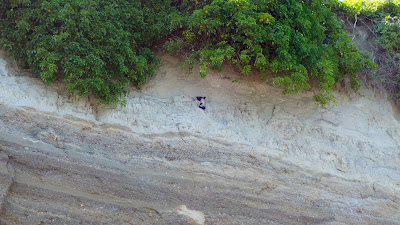This Washington Harbor shoreline at the entrance to Sequim Bay is one of the most culturally significant and extensively researched historical locations in the Sequim-Dungeness area. The few acres of land shown here were home to a S’Klallam Tribal village for at least 600 years, a clam cannery for more than a half-century, and is now utilized for research in marine sciences.

Then - Bugge Clam Cannery, approx. 1905-1910
(Courtesy the Burt Kellogg Collection of the North Olympic Library System)
Now - Pacific Northwest National Laboratory, May 2020
 |
| Bugge Clam Cannery at Washington Harbor, with Bugge's Georgian-style home Courtesy of the North Olympic History Center |
In 1966, Battelle Northwest purchased the property and
developed it into a marine research laboratory and continues to operate at the
site today as Pacific Northwest National Laboratory, operated by Battelle for
the Department of Energy.
The S’Klallam village sxʷčkʷíyəŋ occupied this same site for
approximately 600 years, until the late 1880s. The town of Sequim takes its
name from this village, which translates to “place for going to shoot,” reflecting
the abundant opportunities for hunting. There are a handful of cedar posts on
the beach today that remain from that era (far left in the pictures but
too small to see). They can be easily spotted from a standup paddleboard or kayak as you paddle along the shoreline.
 |
| Cover of Jamestown S'Klallam Tribe's history of the village at Washington Harbor |
The most comprehensive and easily accessible telling of the
Tribe’s history here was prepared by Jamestown S’Klallam Tribe’s Cultural
Resources Specialist David Brownell and is available as an ebook pdf from the Tribal library.

